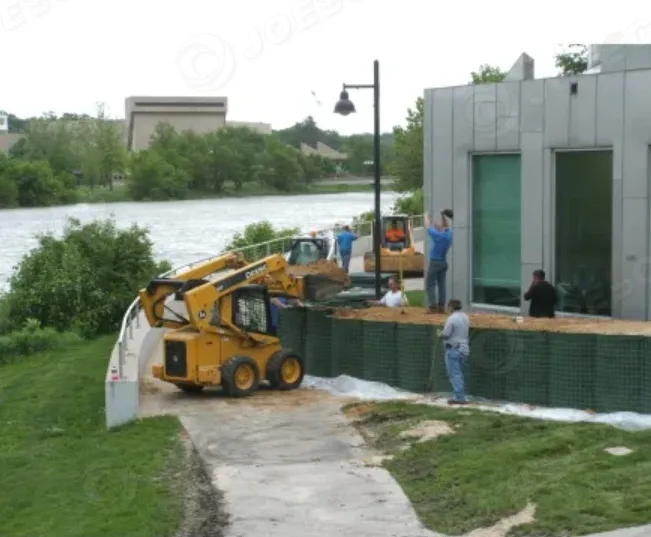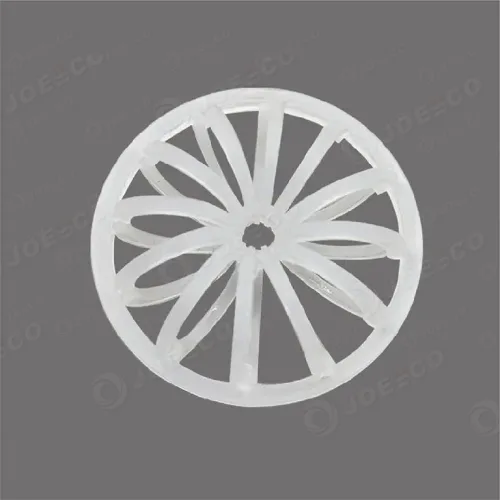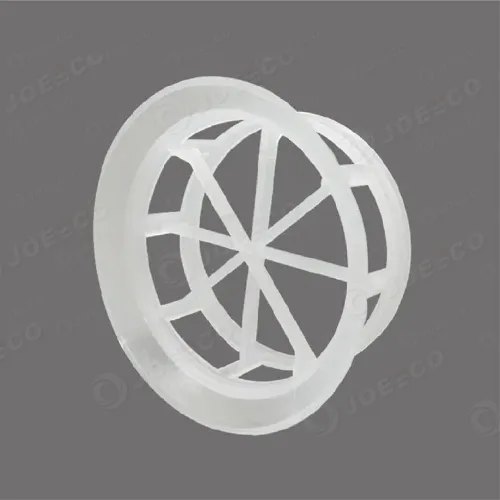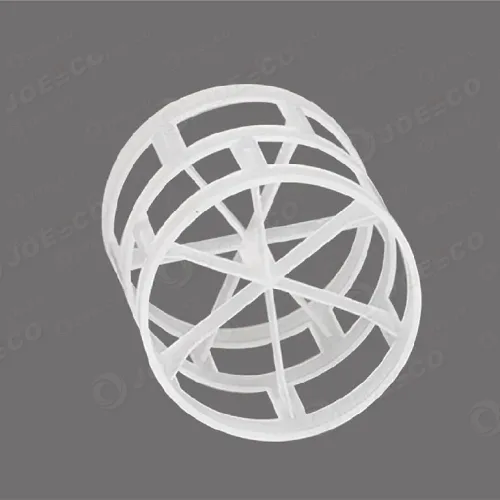When floodwaters surge, every minute counts. Traditional sandbag walls require 100+ person-hours per 100ft—JOESCO HESCO bastions cut deployment to under 2 hours using engineering-grade materials. This guide details optimized installation workflows that transformed disaster responses during Hurricane Katrina and Midwest floods, where HESCO barriers contained floods across 10,700-meter levees.

Core Materials: Engineered for Emergency Hydrology
JOESCO’s flood control superiority starts with militarized materials:
- Galvanized Steel Mesh Framework
- Wire Diameter: 4mm–5mm (high-tensile corrosion resistance)
- Cell Geometry: 76×76mm apertures maximize soil retention under hydraulic pressure
- Geotextile Liner
- Composition: UV-stabilized non-woven polypropylene
- Function: Prevents fill erosion while permitting controlled water filtration
- Modular Design
- Standard Units: 1.4×1.1×9.8m to 2.1×1.5×30m (stackable to 4m height)
- Foldable Transport: Flattened units occupy 80% less space than traditional barriers
Critical Installation Protocol: 4-Step Emergency Deployment
Maximize barrier integrity during crises with this battle-tested workflow:
- Terrain Assessment & Prep (0–15 mins)
- Clear debris from deployment zone
- Verify ground slope ≤5° to prevent rollover
- Mark alignment with spray paint (curved levees require 10% unit overlap)
- Rapid Unit Assembly (15–45 mins)
- Unfold HESCO units along marked lines
- Interlock adjacent units via steel hooks (≤5mm gap tolerance)
- Anchor end units with ground stakes in soft soils
- Mechanized Filling (45–120 mins)
- Use loaders to deposit sandy fill (70% sand, 30% silt) in 15cm layers
- Compact each layer at 25% moisture content
- Fill height: Minimum 0.5m above predicted flood peak
- Reinforcement & Monitoring
- Stack second layer with 50% offset for currents >3m/s
- Cover joints with waterproof tarps during heavy rain
- Deploy sensors to monitor barrier deflection
Pro Tip: Pre-stage HESCO kits at high-risk floodplains—folded units withstand 5-year outdoor storage without degradation.
Performance Validation: Real-World Flood Metrics
Third-party data confirms HESCO’s hydraulic superiority:
| Parameter | HESCO Barrier | Sandbag Wall |
|---|---|---|
| Deployment Speed | 100ft in 110 mins | 100+ person-hours |
| Water Resistance | 3.5m/s current | Fails at 1.8m/s |
| Reusability | 90% parts salvage | Zero reusability |
| Cost per Foot | $42 (filled) | $220+ (labor only) |
Key physics enabling reliability:
- Hydraulic Load Distribution: Hexagonal cells redirect water pressure laterally
- Geotextile Soil Locking: Prevents piping erosion beneath barriers
- Modular Redundancy: Single unit failure doesn’t cascade
Disaster Response Case Studies
- Hurricane Katrina (2005): 8,200m of HESCO levees deployed in 72 hours across New Orleans, containing 4.3m storm surges where concrete failed
- Midwest Floods (2008): Emergency crews erected 107km of barriers in 10 days using 80% local soil fill
- California Storm (2024): ESR Inc. contained sewage overflow in 6 hours using pre-staged JOESCO kits
Maintenance & Cost Optimization
- Emergency Repairs: Replace damaged cells in <15 mins using Quick-Clip hooks
- Post-Flood Recovery:
- Drain units, remove silt, and sun-dry liners
- Inspect mesh for debris impacts (95% units reusable after moderate floods)
- Storage Protocol: Fold units vertically in pallets (1,200ft³/acre vs. 25,000ft³ for sandbags)





